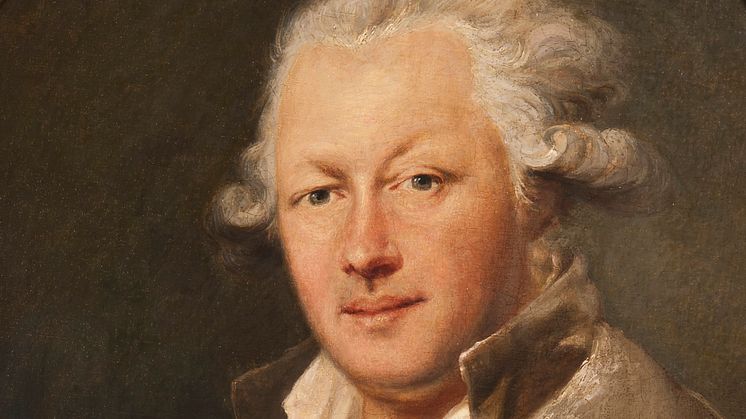
Press release -
Exhibition about the mysterious Swedish miniature painter Peter Adolf Hall at Nationalmuseum
On 23 March Nationalmuseum opens an exhibition about the Swedish miniature painter Peter Adolf Hall. He revolutionised the art of miniature portraits in Paris in the latter half of the 18th century and enjoyed great success. But how Hall came by his innovative miniature painting technique, and how he learned or developed this art form, remains a mystery.
The mysterious Peter Adolf Hall – a Swedish miniature painter in 18th-century Paris presents the Swedish artist Peter Adolf Hall. The exhibition includes some 70 portrait miniatures from the museum’s collection, both by Hall himself and some of the followers who were heavily influenced by his mastery of free style, such as Louis-Lié Périn-Salbreux, Jacques Antoine Marie Lemoine and Augustin Ritt. The exhibition is the first to be shown in the Focus Gallery, a new exhibition space adjacent to the Treasury where in-depth information on the collections is presented in a slightly smaller format. In connection with the exhibition, a book about Peter Adolf Hall is also being published.
Born in Borås in Sweden, Hall studied in Stockholm under the pastel painter Gustaf Lundberg. This offers a clue as to how Hall came by his innovative miniature painting technique, but how he learned or developed this art form, remains a mystery. When Hall arrived in Paris in 1766, he was already a fully fledged miniature portraitist, with a particular talent for reproducing the finish of garment fabrics. This was to become something of a trademark. He used relatively thick layers of watercolour in relief, a technique known as impasto, to create the illusion of reflected light on various materials, especially textiles. Folds were emphasised with wide brushstrokes and lines. Another revolutionary feature of Hall’s free style was the way he depicted a glowing skin by taking advantage of the ivory on which miniatures were painted and allowing it to shine through a thin, transparent layer of watercolour paint.
In 1767, a mere year after his arrival, Hall received a royal commission. Two years later he became an associate member of the French academy of fine arts, but he never applied for full membership as expected of him. He was so secure in his success that he clearly felt no need to devote time to producing a reception piece in order to become a full member. Besides his artistic talent and skill, there was another reason for Hall’s rapid progress in Paris: he was an adept social climber.
The exhibition traces how Hall’s painting style changed over the years. The colour palette became warmer, and the subjects were portrayed more freely. In the 1780s he enjoyed great success, was incredibly productive and made a lot of money. Perhaps out of a desire to please his subjects, Hall eventually developed a somewhat affected style which meant that, in particular, all the women in his portraits looked alike. The French Revolution put an abrupt end to all this. Hall’s patrons left the country, and he went too. He departed for Brussels in May 1791 and died two years later in Liège. Although Hall’s style of portraiture did not survive the French Revolution, his innovative miniature paintings influenced several of his younger French contemporaries.
Nationalmuseum’s miniatures collection is the world’s largest and comprises 5,700 miniatures, mainly portraits, by Swedish and European artists from the 16th to the mid-20th century.
The mysterious Peter Adolf Hall – a Swedish miniature painter in 18th-century Paris will be on show in the Focus Gallery on the middle floor 23 March–25 June 2023. Curator is Magnus Olausson, head of the collections at Nationalmuseum.
Media enquiries
Hanna Tottmar, head of press, press@nationalmuseum.se, +46 (0)8-5195 4400
Categories
Nationalmuseum is Sweden’s museum of art and design. The collections comprise some 700 000 objects, including paintings, sculpture, drawings and graphic art from the 16th century up to the beginning of the 20th century and the collection of applied art and design up to the present day. Nationalmuseum is a government authority with a mandate to preserve cultural heritage and promote art, interest in art and knowledge of art.

